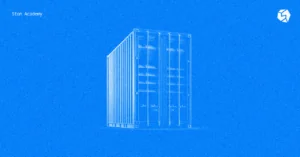The TON blockchain is one of the most powerful contenders for the title of a competitor to the Ethereum network. The main reason for such a statement is the fact that the TON blockchain has considerable potential from a technological standpoint and its performance metrics bear value. The TON blockchain has a number of distinct advantages that will be explored in the given material.
Comparative analysis
If the TON blockchain were to be compared with the Ethereum network, it would become evident that some significant advantages place TON well above its competitor, namely:
- The TON blockchain has a block time of 5 seconds compared to Ethereum’s 12 second.
- The time to finality for TON is below 6 seconds, against 10 to 15 minutes for Ethereum.
- TON’s simple and complex transaction performance is consistently high, against the potentially high level for Ethereum.
- TON’s support for sharding stands at 260 shards per workchain, while Ethereum has only a maximum of 26 shards.
- TON’s cross-shard communication is almost instantaneous, while Ethereum needs crosslinks to make the process possible.
Since transaction speeds are vital for blockchain scalability and utilization, TON has a significant advantage in this regard compared to its rival. The faster the transaction is processed, the faster a new one can be taken on by the system. This means users will not experience lag times and the entire network will operate faster, allowing more scalable and power-intensive applications to run without interruptions or bottlenecks.
The fact that TON creates new blocks on each shardchain and the masterchain approximately every 5 seconds is a major advantage, since it means the transactions will be passed faster. At the same time, Ethereum relies on the slot and epoch approach that requires at least 12 seconds for a new Beacon Chain and shard chain to be proposed by a validator. In Ethereum, each epoch contains 32 slots, which require 6.4 minutes to be hashed. Each block finality cycle lasts a minimum of 2 epochs, which already adds up to around 12.8 minutes.
Combined, these metrics give TON a significant advantage for running DeFi and GameFi applications, which entail a high number of transactions running simultaneously from multiple users. The claims Ethereum has made that it will be able to perform over 10,000 transactions per second have not yet been proven, and that considerably hampers scalability potential.
Most importantly, TON provides dynamic sharding, which can potentially accommodate as many as 232 workchains, each of which can individually be divided into an additional 260 shardchains. This means that transactions will be near-instantaneous, resulting in millions of processes taking place at the same time.
The most Ethereum can handle is 64 shardchains, and even so, it is impossible to tell what these elements will be able to offer users and how they will interact. Even more interesting is the fact that new shards will not be able to run on the EVM and will likely be used only as additional storage space.
Conclusion
At its most basic, the TON blockchain outperforms the Ethereum network in terms of scalability and transaction processing. This places the network in a highly advantageous position and allows it to act as an attractive venue for developers seeking to deploy their applications that require scaling and high transaction throughput.





